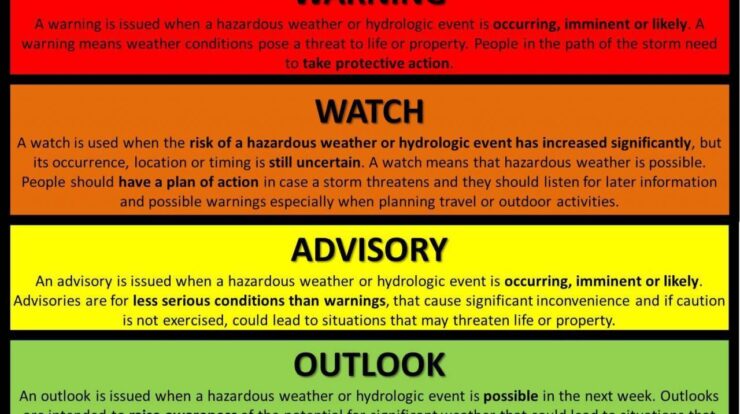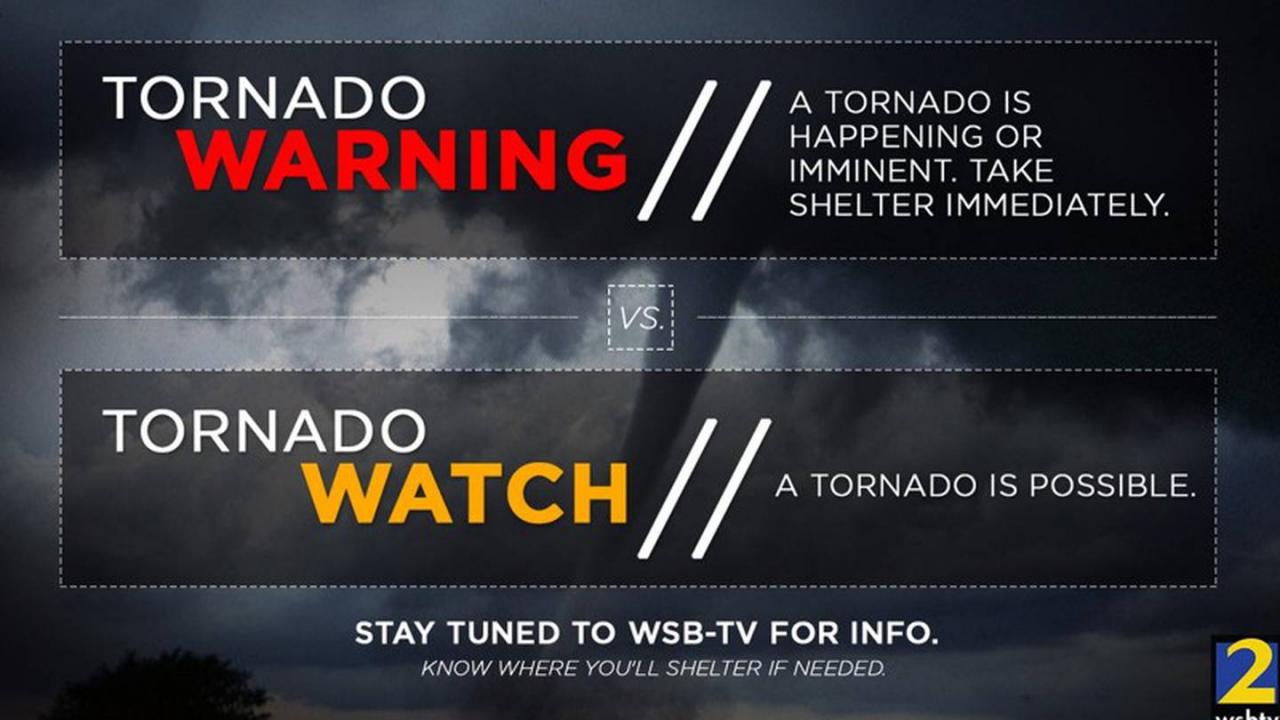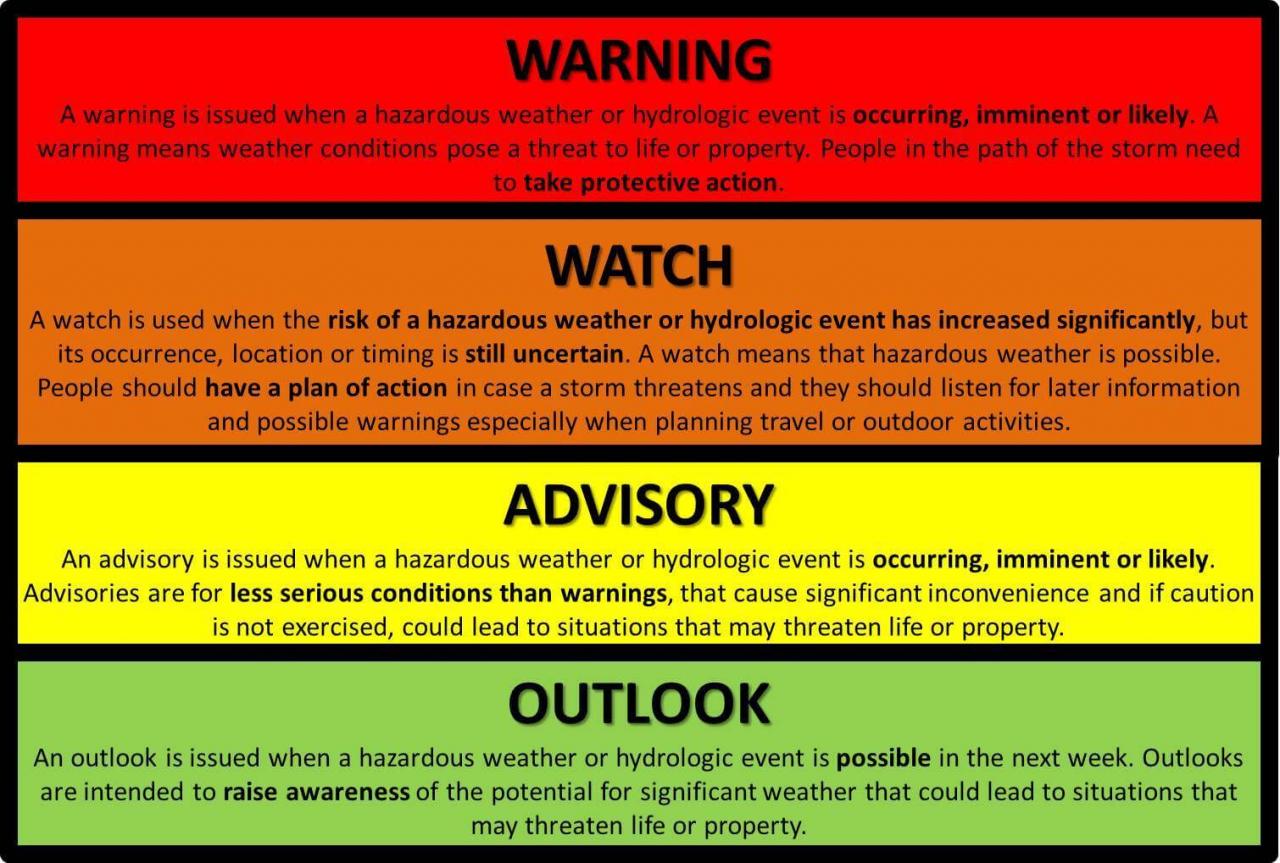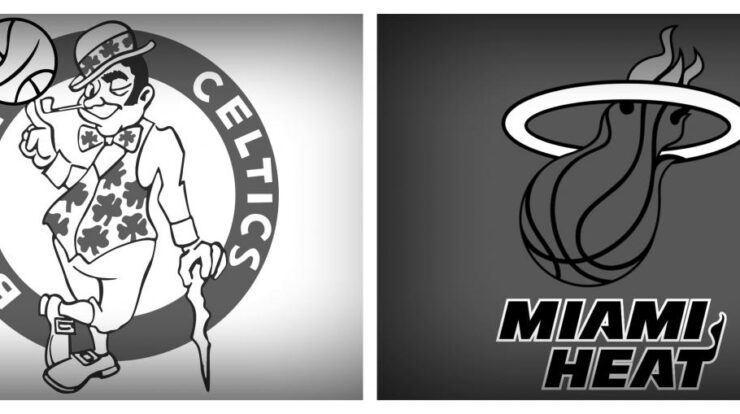
Is a watch or warning worse – When it comes to severe weather or other impending threats, the difference between a watch and a warning can be crucial. Understanding the severity and consequences of each can help you stay safe and prepared.
A watch means that conditions are favorable for a particular hazard to develop, while a warning indicates that the hazard is imminent or already occurring. Ignoring a watch may put you at risk, while ignoring a warning can have devastating consequences.
Severity and Consequences
A watch is issued when conditions are favorable for the development of a hazardous weather event. A warning is issued when the hazardous weather event is imminent or occurring. The severity of a weather event is determined by its intensity and potential impact on life and property.
For example, a tornado watch means that conditions are favorable for the development of tornadoes, while a tornado warning means that a tornado has been spotted or is indicated by radar.
Ignoring a watch or warning can have serious consequences. If a tornado watch is issued, people should be prepared to take shelter if a tornado warning is issued. If a tornado warning is issued, people should immediately take shelter in a sturdy building or underground.
Issuing Authorities and Procedures
Watches and warnings are issued by the National Weather Service (NWS). The NWS uses a variety of data to determine when to issue a watch or warning, including radar, satellite, and surface observations. The NWS also works with local emergency management agencies to coordinate the dissemination of watches and warnings.
Watches and warnings are disseminated through a variety of channels, including television, radio, and the internet. The NWS also has a mobile app that can be used to receive watches and warnings.
When it comes to weather warnings, it’s important to understand the difference between a watch and a warning. A watch means that conditions are favorable for severe weather to develop, while a warning means that severe weather is already occurring or is imminent.
Public Response and Preparedness

It is important for the public to respond to watches and warnings in a timely manner. When a watch is issued, people should be prepared to take action if a warning is issued. When a warning is issued, people should immediately take shelter in a sturdy building or underground.
For those looking to host a virtual movie night, Amazon Watch Party is a great option. This feature allows you to watch movies and TV shows with friends and family who are in different locations.
There are a number of things that people can do to prepare for a hazardous weather event, including:
- Developing a family emergency plan
- Having an emergency kit
- Knowing the evacuation routes for your home and workplace
- Staying informed about weather forecasts
Emergency management agencies play a vital role in coordinating public response to hazardous weather events. These agencies work with the NWS to disseminate watches and warnings, and they also provide assistance to communities that have been affected by a hazardous weather event.
Basketball fans can watch lakers vs nuggets live on NBA TV or through the NBA app. The game will also be available to stream on fuboTV, Hulu + Live TV, and YouTube TV.
Historical Examples and Case Studies

There are many historical examples of watches and warnings that have been issued. One of the most famous examples is the Hurricane Katrina watch and warning. In 2005, the NWS issued a hurricane watch for the Gulf Coast of the United States.
The watch was later upgraded to a warning, but many people ignored the warning and did not evacuate. As a result, Hurricane Katrina caused widespread damage and loss of life.
Another example of a watch and warning is the tornado outbreak of 2011. In April 2011, the NWS issued a tornado watch for the southeastern United States. The watch was later upgraded to a warning, and over 300 tornadoes were reported.
The tornadoes caused widespread damage and loss of life.
Technological Advancements: Is A Watch Or Warning Worse
Technological advancements have improved the issuance and dissemination of watches and warnings. In the past, watches and warnings were issued by hand, and they were often not disseminated to the public in a timely manner. Today, watches and warnings are issued electronically, and they can be disseminated to the public through a variety of channels, including television, radio, and the internet.
If you’re looking to catch the action of the Bare Knuckle Fighting Championship (BKFC), you can watch BKFC live on their website or through their app. Alternatively, you can tune in to their fights on FITE TV or on UFC Fight Pass.
For those who prefer a more traditional viewing experience, you can watch BKFC on your local cable or satellite provider.
Technological advancements have also improved the accuracy of watches and warnings. In the past, watches and warnings were often issued based on limited data. Today, the NWS uses a variety of data to determine when to issue a watch or warning, including radar, satellite, and surface observations.
This data allows the NWS to issue more accurate watches and warnings.
End of Discussion

Ultimately, the best way to stay safe is to heed the advice of authorities and take appropriate precautions. By understanding the difference between a watch and a warning, you can make informed decisions and protect yourself and your loved ones.
FAQ Compilation
What’s the difference between a watch and a warning?
A watch means conditions are favorable for a hazard to develop, while a warning indicates the hazard is imminent or already occurring.
What should I do if I hear a watch or warning?
Take appropriate precautions, such as seeking shelter, securing loose objects, and staying informed about the situation.
Who issues watches and warnings?
Watches and warnings are typically issued by government agencies responsible for public safety, such as the National Weather Service.





